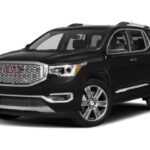For those who prioritize passenger comfort, generous luggage space, ample ground clearance, and the option of three rows of seating, the SUV category naturally becomes appealing. However, this often comes at the expense of the engaging driving dynamics cherished by automotive enthusiasts. The Audi Q7 distinguishes itself in the crowded field of family-oriented SUVs by masterfully blending practical capabilities with an enjoyable driving experience and the luxurious features expected at its price point.
The Q7’s entry-level model starts at $49,950, a strategically important price point for luxury vehicle marketing, and comes equipped with a new 252-horsepower 2.0-liter turbocharged four-cylinder engine. For those seeking enhanced performance, the optional 333-horsepower supercharged V-6 engine propels the Q7 to 60 mph in a brisk 5.5 seconds, positioning it among the quicker vehicles in its class. This $5,800 engine upgrade also increases the towing capacity from 4,400 pounds to an impressive 7,700 pounds when paired with the $550 Towing package. This towing capability surpasses even that of a traditional body-on-frame Chevrolet Tahoe. Inside, folding both rows of seats creates a flat loading floor and a substantial 72 cubic feet of cargo space, perfect for hauling gear in any weather condition.
While the base price is attractive, a fully equipped 3.0T Prestige model can exceed $70,000. However, this significant price increase brings tangible upgrades. While other luxury SUVs in this segment may offer comparable levels of leather upholstery, wood trim, refined controls, and advanced safety and technology features, none match Audi’s groundbreaking Virtual Cockpit. This innovative 12.3-inch digital instrument cluster seamlessly integrates infotainment displays, representing the kind of configurable interface many have anticipated since the advent of TFT screens in place of traditional analog gauges. The Virtual Cockpit is standard on Prestige models (a $9,500 premium exclusive to the 3.0T engine) and optional on Premium Plus models as part of the Vision package ($2,000), which also includes full LED headlights and a surround-view camera system.
Exclusively available on the Prestige trim is the $4,000 Adaptive Chassis package, featuring air springs. While larger wheels can enhance aesthetics, they often compromise ride comfort. However, the Audi Q7’s air-sprung suspension is expertly tuned to work in harmony with the dampers and 20-inch wheels. The Q7 effectively absorbs bumps, cracks, and potholes, delivering a ride quality that belies its 5,000-pound weight, feeling as if it’s floating on air. Furthermore, this package incorporates rear-wheel steering, which at speeds below 37 mph reduces the standard 40.7-foot turning circle, enhancing maneuverability. The Q7’s robust structure eliminates any hint of cowl shake, and its dynamic composure allows for genuinely enjoyable cornering, should you venture beyond highway driving.
Compared to some rivals, the Audi’s interior and exterior design may appear more engineered than artistic. However, the vehicle is far fromPlain, and the quality of fit, finish, and materials is exceptional, placing it at the forefront of its class. Ultimately, beauty is subjective, and for those seeking a mid-size luxury SUV that excels in both form and function, the Q7 stands out as a truly compelling and beautiful choice.
2017 Audi Q7 Specifications
VEHICLE TYPE: front-engine, all-wheel-drive, 7-passenger, 4-door hatchback
BASE PRICE: $49,950–$65,250
ENGINES: turbocharged and intercooled DOHC 16-valve 2.0-liter inline-4, 252 hp, 273 lb-ft; supercharged and intercooled DOHC 24-valve 3.0-liter V-6, 333 hp, 325 lb-ft
TRANSMISSION: 8-speed automatic with manual shifting mode
CURB WEIGHT (C/D EST): 4800–4950 lb
FUEL ECONOMY: EPA combined/city/highway driving: 21–22/19–20/25 mpg
